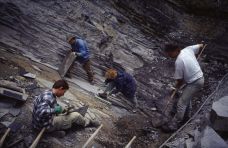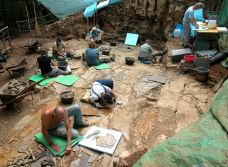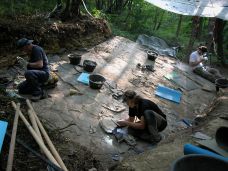Research lines and projects
The more than 20,000 macrofossils discovered in 150 years of research - especially the fish, marine reptiles, bivalves, ammonoids, crustaceans and calcareous algae, but also terrestrial reptiles, insects and plants transported from the mainland or islands into the sea - allow us to more precisely reconstruct both the marine and terrestrial environments that were present between 239 and 243 million years ago along the coastline of the western Tethys.
Although the focus of past studies has mostly been on the reptiles, fish and larger invertebrates (i.e. the macrofossils), the current use of electron microscopes allows us to study in detail microfossils such as radiolarians, foraminifera or even bacterial communities, which give us important information about the condition of the marine environment at the time. These micro-palaeontological techniques also allow the study of pollen and spores, which provide important clues on the development of vegetation on land and climate.
Through sophisticated methods of radiometric dating, it is also possible to determine with extreme precision the age of volcanic ashes and the time that elapsed between events. This allows, for example, the estimation of the time it took for the evolution of a given group or species, an aspect particularly relevant for Monte San Giorgio, which has a nearly five million years sequence of fossil-bearing rocks.
The paleontological research in progress at Monte San Giorgio is therefore based on a strong interdisciplinary approach, involving a combination of several very different fields of study, such as sedimentology, geochemistry and palynology. The focus of studies is no longer on only individual fossils, but instead the entire association of fossil specimens, thus allowing the refining of chrono- and biostratigraphy and new palaeoclimatic and palaeoecological reconstructions of the Middle Triassic.
In addition, over the last twenty years, new vertebrate fossils have been discovered in the Triassic of south China (the provinces of Guizhou, Yunnan and Anhui), which are closely related to the animals found at Monte San Giorgio. The fossils collected date back to intervals of time older still, but also younger , than those at Monte San Giorgio, suggesting that the origin of many species of reptiles and fish known in Europe might have been at the eastern edge of the Tethys Ocean, approximately 6,000 km to the east.







